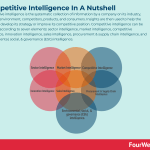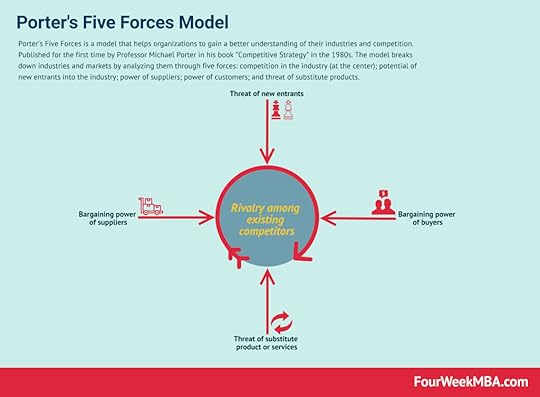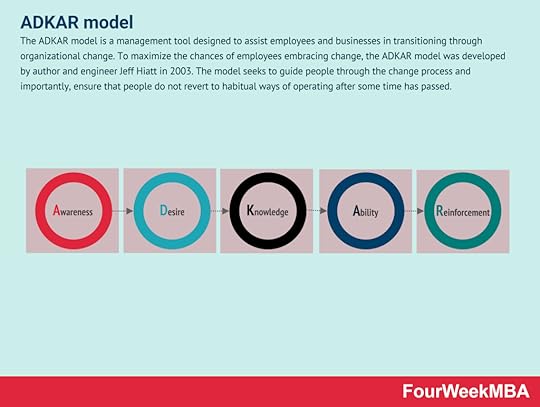What Is Competitive Intelligence? Competitive Intelligence In A Nutshell


Competitive intelligence is the systematic collection of information by a company on its industry, business environment, competitors, products, and consumers. Insights are then used to help the company develop its strategy or improve its competitive position. Competitive intelligence can be assessed according to seven elements: sector intelligence, market intelligence, competitive intelligence, innovation intelligence, sales intelligence, procurement & supply chain intelligence, and Environmental, social, & governance (ESG) intelligence.
Understanding competitive intelligenceToday, the rate of competition and market disruption is cause for concern for many businesses. According to research by Accenture, 63% of companies are currently experiencing disruption with 44% of those companies highly susceptible to the phenomena.
Competitive intelligence helps a business secure and maintain a competitive advantage by developing a core strategy based on data-backed predictions. In other words, the business uses competitive intelligence to capture, analyze, and then act on information related to their particular competitive landscape. This information can be gleaned from the market, competitors, products, supply chain, industry, and target audience.
Perhaps unsurprisingly, there are many benefits to developing strategies based on competitive intelligence. These strategies enable businesses to:
Identify industry trends or competitive threats ahead of time.Better analyze their strengths and weaknesses. Allocate resources more efficiently. Maximize their return on investment (ROI), andImprove product development and product launching.The seven elements of competitive intelligenceThe seven elements of competitive intelligence help remind businesses that there is more to the approach than simply analyzing its competitors.
To develop a broad, holistic strategy, each business should consider the following seven elements of intelligence:
Sector intelligence External economies of scale describe factors beyond the control of a company that are present in the same industry and that lead to cost benefits. These factors may be positive or negative industry or economic trends. External economies of scale, therefore, are business-enhancing factors occurring outside a company but within the same industry.
External economies of scale describe factors beyond the control of a company that are present in the same industry and that lead to cost benefits. These factors may be positive or negative industry or economic trends. External economies of scale, therefore, are business-enhancing factors occurring outside a company but within the same industry.Sectors are large groups of companies with similar primary business activities such as finance, healthcare, and communications. Sector intelligence evaluates large-scale economic trends and fluctuations.
Market intelligence A comparable company analysis is a process that enables the identification of similar organizations to be used as a comparison to understand the business and financial performance of the target company. To find comparables you can look at two key profiles: the business and financial profile. From the comparable company analysis it is possible to understand the competitive landscape of the target organization.
A comparable company analysis is a process that enables the identification of similar organizations to be used as a comparison to understand the business and financial performance of the target company. To find comparables you can look at two key profiles: the business and financial profile. From the comparable company analysis it is possible to understand the competitive landscape of the target organization.As the name suggests, market intelligence pertains to information about the market the business operates in. Market intelligence can strengthen market positioning and clarify competitors, customers, growth opportunities, and current or future problems. Since most markets are dynamic, the business needs to prioritize the regular collection of market intelligence to remain competitive.
Competitive intelligence Porter’s Five Forces is a model that helps organizations to gain a better understanding of their industries and competition. Published for the first time by Professor Michael Porter in his book “Competitive Strategy” in the 1980s. The model breaks down industries and markets by analyzing them through five forces
Porter’s Five Forces is a model that helps organizations to gain a better understanding of their industries and competition. Published for the first time by Professor Michael Porter in his book “Competitive Strategy” in the 1980s. The model breaks down industries and markets by analyzing them through five forcesWhich is focused on the movements and decisions of competitors in a given industry. How is the competitor negotiating sales deals or developing products? What are the key takeaways from their marketing campaigns?
Innovation intelligence An innovation funnel is a tool or process ensuring only the best ideas are executed. In a metaphorical sense, the funnel screens innovative ideas for viability so that only the best products, processes, or business models are launched to the market. An innovation funnel provides a framework for the screening and testing of innovative ideas for viability.
An innovation funnel is a tool or process ensuring only the best ideas are executed. In a metaphorical sense, the funnel screens innovative ideas for viability so that only the best products, processes, or business models are launched to the market. An innovation funnel provides a framework for the screening and testing of innovative ideas for viability.Businesses need to innovate without overextending themselves and diluting their brand. Disruptive businesses need to find gaps in a market where innovation is likely to be commercially viable.
Sales intelligence A sales cycle is the process that your company takes to sell your services and products. In simple words, it’s a series of steps that your sales reps need to go through with prospects that lead up to a closed sale.
A sales cycle is the process that your company takes to sell your services and products. In simple words, it’s a series of steps that your sales reps need to go through with prospects that lead up to a closed sale.This is a form of data-backed intelligence where sales teams create customer profiles, generate leads, and close accounts. Sales intelligence encourages businesses to monitor the market for certain triggers which indicate that a customer is ready to buy.
Procurement and supply chain intelligence The supply chain is the set of steps between the sourcing, manufacturing, distribution of a product up to the steps it takes to reach the final customer. It’s the set of step it takes to bring a product from raw material (for physical products) to final customers and how companies manage those processes.
The supply chain is the set of steps between the sourcing, manufacturing, distribution of a product up to the steps it takes to reach the final customer. It’s the set of step it takes to bring a product from raw material (for physical products) to final customers and how companies manage those processes.This type of collective intelligence gives the business insight into supply and demand figures, production costs, storage costs, regulatory and taxation costs, material supply intelligence, and competitive sales prices. Essentially, procurement and supply chain intelligence details the required rate of production based on demand.
Environmental, social, and governance (ESG) intelligence Environmental, social, and governance (ESG) criteria comprise a set of standards socially responsible investors use to evaluate a company based on three main criteria: environmental, social, and corporate governance. Combined they help assess the social responsibility effort of companies in the marketplace.
Environmental, social, and governance (ESG) criteria comprise a set of standards socially responsible investors use to evaluate a company based on three main criteria: environmental, social, and corporate governance. Combined they help assess the social responsibility effort of companies in the marketplace. ESG intelligence tracks the environmental footprint of a business and details the sustainability measures introduced by competitors. ESG also encompasses social welfare and humanitarian initiatives and the relationships between organizations and national and foreign governments. As consumer awareness around ESG principles increases, organizations must incorporate them into their strategies to remain competitive.
Key takeaways:Competitive intelligence is the collection of information by a company on its industry, business environment, competitors, products, and consumers. Insights are used to help the company develop its strategy or improve its competitive position.Strategies based on competitive intelligence help a business improve product development, identify industry trends or competitive threats ahead of time, and maximize return on investment.The seven elements of competitive intelligence remind businesses that there is more to the approach than simply analyzing competitors. Intelligence must also be considered from a sector, market, innovation, sales, procurement, and ESG perspective.Main Free Guides:
Business ModelsBusiness StrategyBusiness DevelopmentDigital Business ModelsDistribution ChannelsMarketing StrategyPlatform Business ModelsRevenue ModelsTech Business ModelsBlockchain Business Models FrameworkConnected Business Frameworks To Competitive Intelligence Environmental, social, and governance (ESG) criteria comprise a set of standards socially responsible investors use to evaluate a company based on three main criteria: environmental, social, and corporate governance. Combined they help assess the social responsibility effort of companies in the marketplace.
Environmental, social, and governance (ESG) criteria comprise a set of standards socially responsible investors use to evaluate a company based on three main criteria: environmental, social, and corporate governance. Combined they help assess the social responsibility effort of companies in the marketplace.  Change is an important and necessary fact of life for all organizations. But change is often unsuccessful because the people within organizations are resistant to change. Change management is a systematic approach to managing the transformation of organizational goals, values, technologies, or processes.
Change is an important and necessary fact of life for all organizations. But change is often unsuccessful because the people within organizations are resistant to change. Change management is a systematic approach to managing the transformation of organizational goals, values, technologies, or processes. An effective risk management framework is crucial for any organization. The framework endeavors to protect the organization’s capital base and revenue generation capability without hindering growth. A risk management framework (RMF) allows businesses to strike a balance between taking risks and reducing them.
An effective risk management framework is crucial for any organization. The framework endeavors to protect the organization’s capital base and revenue generation capability without hindering growth. A risk management framework (RMF) allows businesses to strike a balance between taking risks and reducing them. Timeboxing is a simple yet powerful time-management technique for improving productivity. Timeboxing describes the process of proactively scheduling a block of time to spend on a task in the future. It was first described by author James Martin in a book about agile software development.
Timeboxing is a simple yet powerful time-management technique for improving productivity. Timeboxing describes the process of proactively scheduling a block of time to spend on a task in the future. It was first described by author James Martin in a book about agile software development. Herzberg’s two-factor theory argues that certain workplace factors cause job satisfaction while others cause job dissatisfaction. The theory was developed by American psychologist and business management analyst Frederick Herzberg. Until his death in 2000, Herzberg was widely regarded as a pioneering thinker in motivational theory.
Herzberg’s two-factor theory argues that certain workplace factors cause job satisfaction while others cause job dissatisfaction. The theory was developed by American psychologist and business management analyst Frederick Herzberg. Until his death in 2000, Herzberg was widely regarded as a pioneering thinker in motivational theory. The Kepner-Tregoe matrix was created by management consultants Charles H. Kepner and Benjamin B. Tregoe in the 1960s, developed to help businesses navigate the decisions they make daily, the Kepner-Tregoe matrix is a root cause analysis used in organizational decision making.
The Kepner-Tregoe matrix was created by management consultants Charles H. Kepner and Benjamin B. Tregoe in the 1960s, developed to help businesses navigate the decisions they make daily, the Kepner-Tregoe matrix is a root cause analysis used in organizational decision making. The ADKAR model is a management tool designed to assist employees and businesses in transitioning through organizational change. To maximize the chances of employees embracing change, the ADKAR model was developed by author and engineer Jeff Hiatt in 2003. The model seeks to guide people through the change process and importantly, ensure that people do not revert to habitual ways of operating after some time has passed.
The ADKAR model is a management tool designed to assist employees and businesses in transitioning through organizational change. To maximize the chances of employees embracing change, the ADKAR model was developed by author and engineer Jeff Hiatt in 2003. The model seeks to guide people through the change process and importantly, ensure that people do not revert to habitual ways of operating after some time has passed. The CATWOE analysis is a problem-solving strategy that asks businesses to look at an issue from six different perspectives. The CATWOE analysis is an in-depth and holistic approach to problem-solving because it enables businesses to consider all perspectives. This often forces management out of habitual ways of thinking that would otherwise hinder growth and profitability. Most importantly, the CATWOE analysis allows businesses to combine multiple perspectives into a single, unifying solution.
The CATWOE analysis is a problem-solving strategy that asks businesses to look at an issue from six different perspectives. The CATWOE analysis is an in-depth and holistic approach to problem-solving because it enables businesses to consider all perspectives. This often forces management out of habitual ways of thinking that would otherwise hinder growth and profitability. Most importantly, the CATWOE analysis allows businesses to combine multiple perspectives into a single, unifying solution. Agile project management (APM) is a strategy that breaks large projects into smaller, more manageable tasks. In the APM methodology, each project is completed in small sections – often referred to as iterations. Each iteration is completed according to its project life cycle, beginning with the initial design and progressing to testing and then quality assurance.
Agile project management (APM) is a strategy that breaks large projects into smaller, more manageable tasks. In the APM methodology, each project is completed in small sections – often referred to as iterations. Each iteration is completed according to its project life cycle, beginning with the initial design and progressing to testing and then quality assurance. A holacracy is a management strategy and an organizational structure where the power to make important decisions is distributed throughout an organization. It differs from conventional management hierarchies where power is in the hands of a select few. The core principle of a holacracy is self-organization where employees organize into several teams and then work in a self-directed fashion toward a common goal.
A holacracy is a management strategy and an organizational structure where the power to make important decisions is distributed throughout an organization. It differs from conventional management hierarchies where power is in the hands of a select few. The core principle of a holacracy is self-organization where employees organize into several teams and then work in a self-directed fashion toward a common goal. The CAGE Distance Framework was developed by management strategist Pankaj Ghemawat as a way for businesses to evaluate the differences between countries when developing international strategies. Therefore, be able to better execute a business strategy at the international level.
The CAGE Distance Framework was developed by management strategist Pankaj Ghemawat as a way for businesses to evaluate the differences between countries when developing international strategies. Therefore, be able to better execute a business strategy at the international level. First proposed by accounting academic Robert Kaplan, the balanced scorecard is a management system that allows an organization to focus on big-picture strategic goals. The four perspectives of the balanced scorecard include financial, customer, business process, and organizational capacity. From there, according to the balanced scorecard, it’s possible to have a holistic view of the business.
First proposed by accounting academic Robert Kaplan, the balanced scorecard is a management system that allows an organization to focus on big-picture strategic goals. The four perspectives of the balanced scorecard include financial, customer, business process, and organizational capacity. From there, according to the balanced scorecard, it’s possible to have a holistic view of the business. Scrum is a methodology co-created by Ken Schwaber and Jeff Sutherland for effective team collaboration on complex products. Scrum was primarily thought for software development projects to deliver new software capability every 2-4 weeks. It is a sub-group of agile also used in project management to improve startups’ productivity.
Scrum is a methodology co-created by Ken Schwaber and Jeff Sutherland for effective team collaboration on complex products. Scrum was primarily thought for software development projects to deliver new software capability every 2-4 weeks. It is a sub-group of agile also used in project management to improve startups’ productivity. Kanban is a lean manufacturing framework first developed by Toyota in the late 1940s. The Kanban framework is a means of visualizing work as it moves through identifying potential bottlenecks. It does that through a process called just-in-time (JIT) manufacturing to optimize engineering processes, speed up manufacturing products, and improve the go-to-market strategy.
Kanban is a lean manufacturing framework first developed by Toyota in the late 1940s. The Kanban framework is a means of visualizing work as it moves through identifying potential bottlenecks. It does that through a process called just-in-time (JIT) manufacturing to optimize engineering processes, speed up manufacturing products, and improve the go-to-market strategy.The post What Is Competitive Intelligence? Competitive Intelligence In A Nutshell appeared first on FourWeekMBA.



